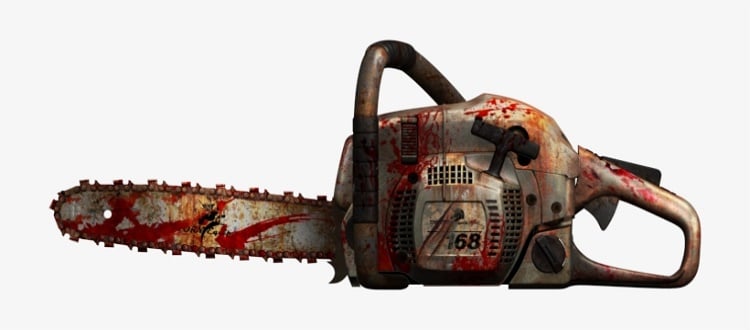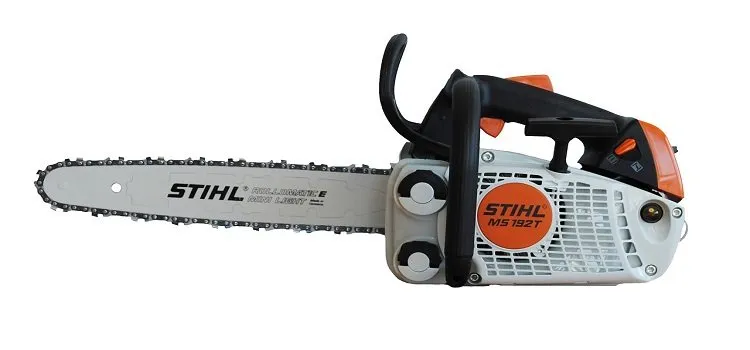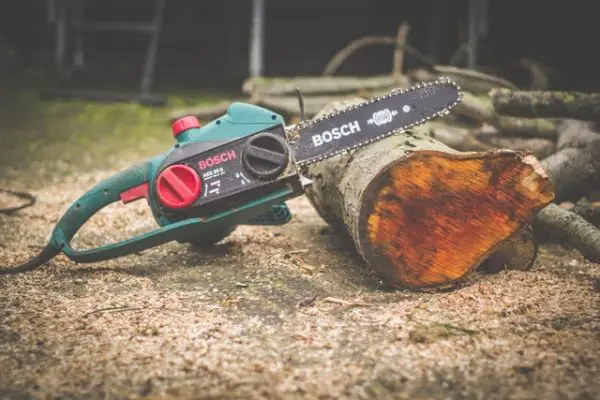You must possess a chainsaw, a heaven-sent engine-run wood cutting tool for carpenters if you are into heavy carpentry. Not only does this machine lessen the strain put upon your body, but also it saves time.
But there is one fatal issue with this device, and that is called rust. Still, once you have proper knowledge about how to clean chainsaw rust, the issue is simple to tackle.
As you know, this pesky problem called rust haunts all tools made of iron, and the iron parts of chainsaws are no exceptions. Whether it is the chain, blade, or teeth, the chainsaw’s efficiency will be severely affected once rust sets in.

So why not adopt a strategy through which you can utilize your tool to the max? All you will have to do is take some measures to remove rust by using some simple methods.
Rust; Iron’s Enemy
There is a saying, ‘Know thy enemy.’ So before we begin, let’s see what exactly rust is. The better we understand it, the better we can combat it.
When iron maintains a prolonged contact with water and air, it gradually gets covered up by a layer of reddish-brown chalky substance, generally known as rust. This happened due to the chemical reaction between iron, water, and oxygen.
Through the oxidization procedure, iron transforms into rust. As a result, the more the rust grows, the more the iron gets corroded. In the end, the iron-made material loses its effectiveness.
It is very important to note that the presence of water and oxygen is the absolute necessity for this procedure.
So, if you keep your iron-made tools well-dried after usage, you can minimize rust-corrosion level. You can also pain the surface of the metal furniture as another safety measure.
Although removing rust following typical washing is extremely hard, using some specialized measures can become extremely easy.
All you will need to do is use a solution that generates a chemical reaction with rust and detaches it from the iron’s surface.
And believe it or not, finding such solutions is not so hard at all! You can get them from most general stores or even make the solution yourself with household materials.
See? It’s simple when you know it.
How to Clean Chainsaw Rust: Some Simple Methods
Now that we have a clear idea about rust and how it is generated into iron, it is time to begin the main part of the writing. As we have mentioned before, we will help you understand how to clean rust from the chainsaw.
And we will try to give you a general idea of the usage procedure of different solutions and methods of removing chainsaw rust. So let’s see the ways to clean rust from chainsaws, shall we?
What you’ll need
But before you begin the cleaning procedure, try to keep some necessary materials near hand. Generally, you will need the following types of equipment.
- Hand gloves
- Facemask
- Safety glasses
- Aluminum and plastic wrapper/ a tray or container of the appropriate size
- A wire brush/sandpaper/steel wool/tinfoil
- Cloth
- Cleaning solutions such as:
- Rust remover chemicals
- Elbow grease
- White vinegar
- Baking soda
- Lemon juice and salt
- Potato, dish soap, and salt/baking soda
Cleaning Chainsaw Rust
Now that we have what we need, let’s begin. Just follow the step by step procedures, and you should face no issues.
Prepare Yourself
Remember, your safety is the most important. No chainsaw can be worth your safety. So, before beginning the procedure, take necessary measures to ensure your safety.
The rust cleaning solutions are of acidic properties. So you should wear gloves, no matter how weak its intensity is.
Also, during chemical reactions, there will be fumes harmful to your body. So never forget to wear safety glasses and a facemask before beginning, okay?
Separate the Rusted Parts
Now that you are ready, check your chainsaw and disassemble it. Check out the rusted parts and separate them from the electrical components.
Prepare the Cleaning Solution
The next step is preparing the cleaning solutions. You can either choose to use store-bought chemical solutions or make them at home.
Amongst store-bought chemical rust removers, Iron OUT Rust Remover, Naval Jelly, Evapo Rust Remover, Metal Glo, WD40 rust remover are popular choices.
You can also use acids like Nitric Acid, Hydrochloric Acid, Sulfuric Acid, Muriatic Acid, etc., of 30 percent intensity by mixing them with water. All these chemicals are relatively fast-acting and capable of dealing with heavy rust.
Aside from store-bought ones, you can also use items you generally use for house cleaning and cooking. For example, white vinegar, baking soda, lemon, etc., note that these solutions are usually sufficient for light to medium rust and require a too long time to work.
Apply the Solution and Clean
Done deciding and preparing the solution? Time for application.
First, take an appropriate sized tray or container. You can also use aluminum and plastic wrap to make an impromptu tray if your saw can’t fit the trays you have in your home.
Now, apply the solution. Remember, different solutions require different approaches and time.
Rust Remover Chemicals
If your saw suffers from heavy rust intensity, and you plan on using store-bought chemicals, prepare a tray or container sturdy enough to withstand the chemical.
Then spray the chemical over the rusted part and wait for 10 to 30 minutes. Afterward, use a wire brush to scrub it. Then wipe out the residue using a clean cloth and keep repeating until all the rust is gone.
Remember, the usage method of different solutions varies. Before using store-bought chemicals, check out the instructions to avoid making mistakes.
Elbow Grease
You can easily remove light rust by scrubbing. Use a wire brush and a little elbow grease and keep cleaning until the part is free of rust. Wash it thoroughly with water and dry it well afterward.
White Vinegar
White vinegar is best for most kinds of rust. The only thing you will need to do is to submerge the affected part thoroughly under the vinegar for 12 hours or overnight.
The acid will slowly dissolve rust. After the time passes, use a brush and water to clean up the tool. Then wipe it thoroughly with a dry cloth to remove every drop of water or vinegar lest you want your metal damaged.
Baking Soda
Another excellent rust remover, especially when it comes to light stain, is baking soda. Simply mix up water and baking soda to make a thick paste.
Then apply it on the rusted surfaces. Wait for about an hour. Then use a wire brush to scrub it well and wash it up thoroughly with water.
If the rust remains, do the procedure again. When the metal is completely clean, wash it well and dry.
Lemon Juice and Salt
Did you know? Lemon juice is also an acid (albeit weak). For small rust spots, lemon juice and the salt combination works wonders.
Rust doesn’t grow in a day. You can use this method to tackle the earliest rust spots. After all, for such a small level, using intense cleaners are kind of extreme, don’t you think?
You will need to cover up the rusted places with salt and then spray lemon juice over the salt. Then let it sit for about two hours.
Afterward, use a lemon peel or wire brush to scrub the places well until they are clean. Wash well with water and thoroughly dry the metal. Done!
Potato, dish Soap, and salt/baking Soda
Like lemon, potato also contains acid. You can use light rust stains using potato, dish soap, and salt or baking soda.
Just cut a potato in half. In two separate bowls, pour dish soap and salt/vinegar. First, press the cut side of the potato over the soap and then the salt.
Rub it well over the rusted area until the rust dissolves. Then, as usual, rinse and dry out sufficiently.
Cleaning the Engine
By the way, these methods are a bit unsafe when it comes to the engine. You can’t use any liquid or corrosive solutions in general, or the machine will probably malfunction.
Just use a blower to remove dust and dirt and a brush to remove the rust with a steel brush. A bit tiresome, but necessary.
Re-assemble the Chainsaw
After all, the cleaning is over, and every part is dried well, re-assemble them again. Check if it works properly by switching it on. If all goes well, store it properly, and you’ll be done.
Last Words
So, what do you think? Did you gain a good understanding of how to clean chainsaw rust from the article?
We tried to give you an easy guide. The rest is up to you. We believe that if you follow these steps carefully, you are unlikely to face any issues!






